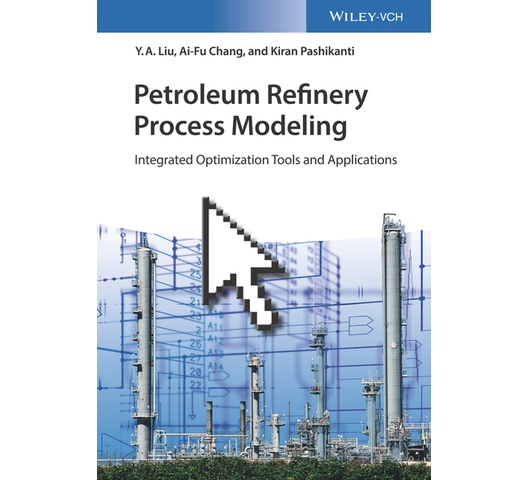
Petroleum Refinery Process Modeling
A comprehensive review of the theory and practice of the simulation and optimization of the petroleum refining processes
Petroleum Refinery Process Modeling offers a thorough review of how to quantitatively model key refinery reaction and fractionation processes. The text introduces the basics of dealing with the thermodynamics and physical property predictions of hydrocarbon components in the context of process modeling. The authors - three experts on the topic - outline the procedures and include the key data required for building reaction and fractionation models with commercial software.
The text shows how to filter through the extensive data available at the refinery and using plant data to begin calibrating available models and extend the models to include key fractionation sub-models. It provides a sound and informed basis to understand and exploit plant phenomena to improve yield, consistency, and performance. In addition, the authors offer information on applying models in an overall refinery context through refinery planning based on linear programming. This important resource:
-Offers the basic information of thermodynamics and physical property predictions of hydrocarbon components in the context of process modeling
-Uses the key concepts of fractionation lumps and physical properties to develop detailed models and workflows for atmospheric (CDU) and vacuum (VDU) distillation units
-Discusses modeling FCC, catalytic reforming and hydroprocessing units
Written for chemical engineers, process engineers, and engineers for measurement and control, this resource explores the advanced simulation tools and techniques that are available to support experienced and aid new operators and engineers.
Petroleum Refinery Process Modeling offers a thorough review of how to quantitatively model key refinery reaction and fractionation processes. The text introduces the basics of dealing with the thermodynamics and physical property predictions of hydrocarbon components in the context of process modeling. The authors - three experts on the topic - outline the procedures and include the key data required for building reaction and fractionation models with commercial software.
The text shows how to filter through the extensive data available at the refinery and using plant data to begin calibrating available models and extend the models to include key fractionation sub-models. It provides a sound and informed basis to understand and exploit plant phenomena to improve yield, consistency, and performance. In addition, the authors offer information on applying models in an overall refinery context through refinery planning based on linear programming. This important resource:
-Offers the basic information of thermodynamics and physical property predictions of hydrocarbon components in the context of process modeling
-Uses the key concepts of fractionation lumps and physical properties to develop detailed models and workflows for atmospheric (CDU) and vacuum (VDU) distillation units
-Discusses modeling FCC, catalytic reforming and hydroprocessing units
Written for chemical engineers, process engineers, and engineers for measurement and control, this resource explores the advanced simulation tools and techniques that are available to support experienced and aid new operators and engineers.
KES 26,628

International delivery
Free click & collect
| UPC | 9783527813360 |
|---|---|
| Author | Y. A. Liu, Ai-Fu Chang, Kiran Pashikanti |
| Pages | 600 |
| Language | English |
| Format | |
| Publisher | Wiley |
| SKU | 9783527813360 |
None

